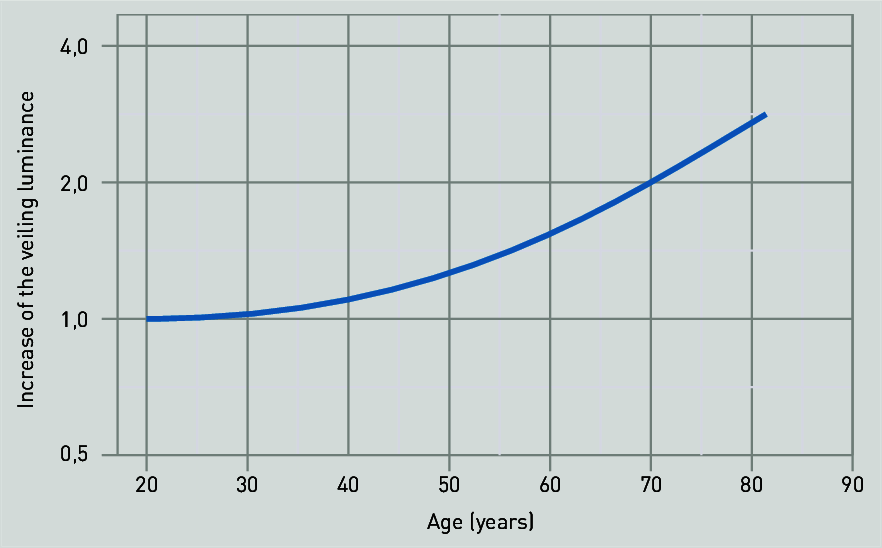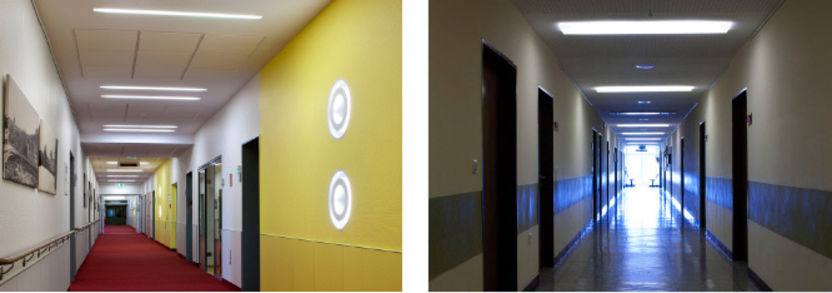Glare sensitivity increases significantly in elderly people. Due to light diffusion at the cornea, the lens and in the vitreous humour, a veil of light spreads across the retina, which is why older people tend to be jarred by excessively bright surfaces (figure). These effects can be counteracted by reducing glaring luminance as well as calculable and projectable lighting glare ratings (UGR values, see chapter "Lighting quality criteria") A reduction of the UGR glare rating by one level, e.g. from UGR = 22 to UGR = 19 is recommended.
Glare

Figure 3.137: Increased veiling luminance at the retina due to clouding in the eye

Figure 3.138: Corridor lighting: Left: glare-free lighting. Right: Daylight reflected by specular floors and walls causes glare
Disturbing glare is generated e.g. in corridors with daylight-bright windows or doors at the end, or by luminaires arranged directly above the centre of the corridor. In both cases, window or luminaire luminance reflects off the usually polished floor and causes unbearable glare – not just for elderly people – which renders visual perception all but impossible (figure). This can be remedied by curtains at the windows, a suitable arrangement of luminaires on the ceiling orwalls, e.g. indirect-direct-distribution, a higher lighting level in the corridor, and most of all by matt floors, which also serve to avoid slipping.
Glossy surfaces which can generate disturbing light reflections are found everywhere in homes: lacquered tables, highly specular dishes, cutlery and glasses, mirrors, glass doors, paintings behind glass etc. People suffering from dementia in particular, are confused by reflections like these and react in spontaneous and uncontrolled ways. Improvements can be achieved by a suitable light source arrangement for these specular surfaces related to the residents’ perspective, by choosing matt surfaces and by using direct-indirect lighting.